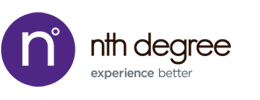When conferences transition to virtual events, what happens to the sponsors and exhibitors? They are still a critical part of the event’s ecosystem but now have an uncertain role in the new format. Many of our clients have long-standing relationships with sponsors and exhibitors who know the event just as well as the people planning it.
Should you tap into these key partners for their perspective on how they should be engaged this year as well as during the return to physical events? We think so.
The need for ongoing dialogue and two-way conversation with exhibitors and sponsors is crucial, especially as many companies are strongly re-evaluating their sponsorship and exhibit plans.
So how do you create an environment that fosters interactive communication and empowerment to work together and go forward?
Form an Exhibitor Advisory Board. Over the past 25+ years, I have created and led tons of Exhibitor Advisory Boards for our clients and today they are more important than ever.
What is an Exhibitor Advisory Board (EAB)? An Exhibitor Advisory Board represents a group of exhibitors and sponsors ranging from small to large companies that gather to discuss the event. The group typically consists of 25-50 participants when conducting the meeting in person. Given our current virtual world, we suggest holding a series of meetings with 10 or so exhibitors at a time to ensure everyone can be heard.
What is the goal of an Exhibitor Advisory Board? By forming an Exhibitor Advisory Board, you are creating a safe and healthy place for sponsors and exhibitors to collaborate. You can benefit from their experience, thoughts,and concerns to discuss what went well and what didn’t. You can utilize their collective expertise and creativity to improve and make the event more successful in years to come. It’s a way to match the needs and wants of exhibitors to your needs as the event organizer.
How do you select EAB Participants? Together with your exhibitor sales and service team/partner, develop an invitation list. Look for participants from sponsoring and exhibiting companies who are collaborative and won’t be shy about sharing their thoughts and ideas. Select exhibitors and sponsors of all sizes and all verticals (if applicable) to give the broadest perspective.
Why is an Exhibitor Advisory Board so important? Now, more than ever, it is imperative that sponsors and exhibitors feel supported and heard. By including sponsors and exhibitors in the event planning process in this way, they are actively engaged in shaping the future of the event and have more ownership of the event. They benefit from participating as well – being involved in the EAB helps them better plan, budget, and take advantage of opportunities the show offers.
What is the format of the Exhibitor Advisory Board meeting? Open forums are a must. Each group member should be given the chance to openly discuss their concerns, worries, and hopes about the conference. This helps you develop a show format and space and sponsorship packages that best represent all interests for the next event. We advise against sending surveys ahead of time to ensure a fluid, unguided conversation. Your team can conduct follow-up calls after the board meeting to ask more detailed questions or discuss proposed plans.
How often should I hold Exhibitor Advisory Board meetings? Multiple meetings per year are beneficial - these allow you to check-in with sponsors throughout the year to understand their current thinking. This is especially important if they are year-round sponsors.
What are the benefits of an EAB? Forming a group represented by your sponsors and exhibitors helps your event be prepared for all outcomes. Together, you can create flexible packages that are mutually beneficial. They help set the pricing strategy by providing an understanding of what they value and the worth of the opportunities. Sponsors and exhibitors feel a sense of ownership with how the event is designed, and they become ambassadors for the event.
The industry is in unprecedented territory. Everything is changing. We are all trying to find our way in this new world of events. The more input and information we have from stakeholders as things evolve, the better chance we all have to succeed.


 404-296-5282
404-296-5282 3237 Satellite Blvd
3237 Satellite Blvd